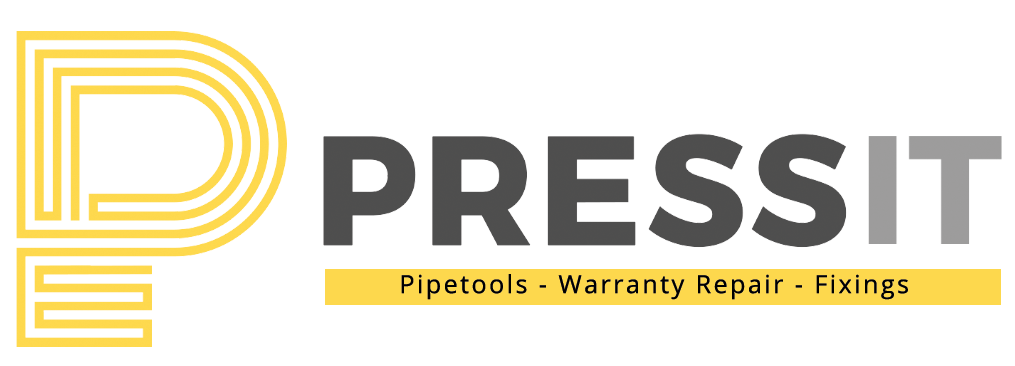
Introduction
Plumbing installations require secure and leak-free connections to ensure efficient water flow and minimise the risk of potential damage. Stainless steel press fittings have emerged as a popular choice due to their ease of installation, durability, and overall performance. These fittings are designed to connect pipes without the need for welding, soldering, or threading, providing a convenient solution for various plumbing applications.
What are Stainless Steel Press Fittings?
Stainless steel press fittings are mechanical connectors used to join pipes in plumbing and heating systems. They consist of two components: the fitting body and a rubber sealing element. The fitting body is made of high-quality stainless steel, ensuring corrosion resistance and long-lasting performance. The rubber sealing element, typically made of EPDM or HNBR, provides a reliable and watertight connection when compressed.
Benefits of Stainless Steel Press Fittings
Stainless steel press fittings offer several advantages that make them a preferred choice for plumbing installations:
Time and Labor Efficiency
The installation process of stainless steel press fittings is significantly faster and simpler compared to traditional methods. The fittings can be easily pressed onto the pipes using a pressing tool, eliminating the need for time-consuming welding or soldering. This saves valuable labor hours and reduces overall installation time.
Leak-free Performance
One of the key benefits of stainless steel press fittings is their exceptional leak-free performance. The rubber sealing element creates a tight seal when compressed, preventing water or gas leakage. This ensures a reliable and durable connection, minimising the risk of costly repairs or maintenance.
Versatility and Flexibility
Stainless steel press fittings are available in a wide range of sizes and configurations, making them suitable for various plumbing applications. They can be used with different pipe materials, including stainless steel, copper, and PEX. This versatility allows for greater flexibility in system design and installation.
Corrosion Resistance
Stainless steel press fittings are highly resistant to corrosion and oxidation. The stainless steel material provides excellent durability, making the fittings suitable for both indoor and outdoor applications. They can withstand harsh environments, ensuring long-term performance without degradation.
Compatibility with Multiple Systems
Stainless steel press fittings are compatible with different plumbing systems, including potable water, heating, cooling, and fire protection systems. This compatibility allows for seamless integration into various building projects, providing a reliable solution for diverse plumbing needs.
Types of Stainless Steel Press Fittings
There are various types of stainless steel press fittings available, each designed for specific applications. Some common types include:
Couplings
Couplings are used to join two pipes of the same diameter together. They provide a secure connection while maintaining the desired alignment.
Elbows
Elbows allow for changes in direction within a plumbing system. They come in different angles, such as 45 degrees and 90 degrees, and provide flexibility in system design.
Tees
Tees are used to create branch connections in plumbing systems. They have three openings, allowing for the connection of three pipes at different angles.
Reducers
Reducers are used to connect pipes of different diameters. They ensure a smooth transition between pipes with varying sizes, maintaining the overall flow efficiency.
Valves
Valves control the flow of water or gas within a plumbing system. Stainless steel press fittings include various types of valves, such as ball valves or check valves, ensuring reliable system operation.
Installation Process
The installation of stainless steel press fittings is straightforward and can be completed in a few simple steps:
Preparation
Before starting the installation, ensure that the pipes and fittings are clean and free from debris. Measure and mark the pipe lengths accurately to ensure precise fitting placement.
Insert the Pipe
Slide the stainless steel press fitting onto the pipe end until it reaches the marked insertion depth. Ensure that the fitting and pipe are aligned correctly.
Pressing
Using a pressing tool specifically designed for stainless steel press fittings, apply controlled pressure to compress the fitting onto the pipe. Follow the manufacturer’s guidelines for the appropriate pressing time and force.
Inspection
After pressing, visually inspect the connection to ensure the fitting is securely in place. Conduct a pressure test to verify the integrity of the installation.
Applications of Stainless Steel Press Fittings
Stainless steel press fittings find application in a wide range of plumbing systems, including:
Residential Plumbing
From single-family homes to multi-unit residential buildings, stainless steel press fittings offer a reliable solution for water supply, drainage, and heating systems.
Commercial and Industrial Buildings
Stainless steel press fittings are widely used in commercial and industrial buildings, including offices, hotels, hospitals, and factories. They provide efficient plumbing solutions for large-scale applications.
HVAC Systems
Heating, ventilation, and air conditioning (HVAC) systems often require secure pipe connections. Stainless steel press fittings offer a reliable and leak-free solution for HVAC installations.
Fire Protection Systems
Fire protection systems require robust and secure connections. Stainless steel press fittings ensure quick and reliable installation, enhancing the safety of buildings.
Comparing Stainless Steel Press Fittings with Traditional Methods
When comparing stainless steel press fittings with traditional methods like welding or soldering, several factors come into play:
Speed and Ease of Installation
Stainless steel press fittings significantly reduce installation time and complexity compared to traditional methods. The press connection process is quick, allowing for efficient project completion.
Skill and Labor Requirements
Traditional methods often require skilled technicians to perform welding or soldering. Stainless steel press fittings can be installed by less-experienced personnel, reducing labor costs and dependency on specialised skills.
Impact on Existing Systems
In retrofit or renovation projects, traditional methods may require extensive modifications or dismantling of existing systems. Stainless steel press fittings provide a non-invasive solution, minimizing disruption to the building and its occupants.
System Flexibility
Stainless steel press fittings allow for easy system modifications or expansions. They can be easily disassembled and reconnected, offering flexibility for future system adjustments.
Maintenance and Durability
Stainless steel press fittings require minimal maintenance due to their inherent durability and resistance to corrosion. However, regular inspections and preventive measures are recommended to ensure optimal performance. Here are a few maintenance tips:
Visual Inspections
Periodically inspect the press fittings for any signs of damage, leaks, or deterioration. Address any issues promptly to prevent further damage.
Flushing and Cleaning
Regularly flush the plumbing system to remove debris or sediment that may accumulate over time. Clean the fittings using appropriate cleaning solutions and tools to maintain their performance.
Preventing Freezing
In cold climates, take necessary precautions to prevent freezing of the plumbing system. Insulate pipes and fittings to protect them from extreme temperatures.
Follow Manufacturer’s Guidelines
Always follow the manufacturer’s recommended maintenance guidelines and procedures to ensure the longevity of the stainless steel press fittings.
Safety Considerations
Safety is paramount when working with plumbing systems, and stainless steel press fittings provide several safety benefits:
Reduced Fire Hazards
Unlike traditional methods involving torches or open flames, stainless steel press fittings eliminate fire hazards associated with welding or soldering.
Chemical-Free Installation
Stainless steel press fittings do not require the use of chemicals or fluxes during installation, ensuring a safer work environment.
Reliable Connections
The tight and leak-free connections provided by stainless steel press fittings minimise the risk of water damage, ensuring the safety of the building and its occupants.
Compliance with Standards
When using stainless steel press fittings, ensure they meet the required industry standards and certifications for safety and performance.
Cost-effectiveness
Stainless steel press fittings offer cost-effective advantages over traditional methods:
Reduced Labor Costs
The fast and simple installation process of stainless steel press fittings reduces labor costs compared to labor-intensive welding or soldering methods.
Minimised Material Waste
With press fittings, there is less material waste compared to traditional methods, where excess materials may be generated from welding rods or solder.
Time Efficiency
The shorter installation time provided by stainless steel press fittings allows for faster project completion, potentially saving on overall project costs.
Long-term Durability
Stainless steel press fittings’ corrosion resistance and long-lasting performance contribute to cost savings by minimising the need for frequent repairs or replacements.
Choosing the Right Stainless Steel Press Fittings
When selecting stainless steel press fittings for your project, consider the following factors:
Compatibility
Ensure the press fittings are compatible with the pipe material and system requirements of your specific project.
Quality and Certification
Choose fittings that meet industry standards and certifications, ensuring they have undergone rigorous testing for performance and safety.
Size and Configuration
Select press fittings that match the required pipe sizes and configurations for your plumbing system.
Manufacturer Reputation
Opt for reputable manufacturers known for their quality products and reliable customer support.
Industry Standards and Certifications
Various industry standards and certifications ensure the quality and performance of stainless steel press fittings.
In the United Kingdom, there are several industry standards that govern press fittings. These standards ensure the quality, safety, and performance of press fittings used in plumbing and heating systems. Some of the key industry standards for press fittings in the UK include:
- BS EN 1254: Part 2 – “Copper and copper alloys – Plumbing fittings – Part 2: Fittings with press ends for use with copper tubes” This standard specifies the requirements for press fittings with press ends designed for use with copper tubes in plumbing applications.
- BS EN 14423: “Metallic fittings with press ends for corrugated flexible metallic hose assemblies for combustible gas” This standard covers press fittings with press ends specifically designed for use with corrugated flexible metallic hose assemblies used in combustible gas applications.
- WRAS Approval The Water Regulations Advisory Scheme (WRAS) is an approval scheme in the UK that ensures compliance with water supply regulations. Press fittings that meet the requirements of WRAS have been tested and approved for use in contact with potable water.
- BSI Kitemark The BSI Kitemark is a voluntary certification mark issued by the British Standards Institution (BSI) to indicate that a product meets specific British standards or other recognized standards. Some press fittings in the UK may carry the BSI Kitemark as a sign of quality and compliance.
Conclusion
Stainless steel press fittings have transformed the plumbing industry with their time-saving installation process, leak-free performance, and overall reliability. These fittings offer numerous benefits, including versatility, corrosion resistance, and compatibility with various plumbing systems. With their cost-effectiveness, safety advantages, and durability, stainless steel press fittings have become a preferred choice for both residential and commercial plumbing applications.
So, if you’re looking to streamline your plumbing installations while ensuring long-term performance and efficiency, consider incorporating stainless steel press fittings into your next project.
Common FAQs about Stainless Steel Press Fittings
Q1. Are stainless steel press fittings suitable for both residential and commercial applications?
Yes, stainless steel press fittings are suitable for a wide range of applications, including residential, commercial, and industrial projects.
Q2. Can stainless steel press fittings be used with different pipe materials?
Yes, stainless steel press fittings are compatible with various pipe materials, such as stainless steel, copper, and PEX.
Q3. Are stainless steel press fittings reusable?
Stainless steel press fittings can be disassembled and reused, providing flexibility for system modifications or expansions.
Q4. Are there any size limitations for stainless steel press fittings?
Stainless steel press fittings are available in different sizes, allowing for a wide range of pipe diameters.
Q5. Can stainless steel press fittings be used in underground installations?
Yes, stainless steel press fittings are suitable for both aboveground and underground installations, as they are highly resistant to corrosion and durable.
